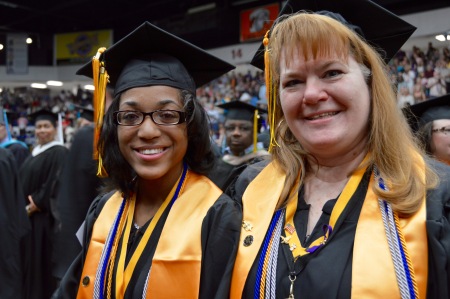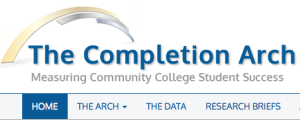 I don’t know about you, but even though classes don’t officially start until next Tuesday, 9/8/15, at Mott, things are really hopping here on campus. It’s Kick-Off Week at the college, and faculty who have been away doing whatever it is faculty do (which – believe it or not – is a lot!) are converging on campus to celebrate the start of the new academic year. Although it has its moments of stress as things gear up, I love all the new energy bubbling around campus!
I don’t know about you, but even though classes don’t officially start until next Tuesday, 9/8/15, at Mott, things are really hopping here on campus. It’s Kick-Off Week at the college, and faculty who have been away doing whatever it is faculty do (which – believe it or not – is a lot!) are converging on campus to celebrate the start of the new academic year. Although it has its moments of stress as things gear up, I love all the new energy bubbling around campus!
Our campus has been very busy with a number of initiatives over the summer, many of which have involved faculty in the development of Guided Pathways. If you’re not familiar with this topic, here’s the short version: Guided Pathways involves a multi-faceted approach to helping more students graduate, but beginning with the development of clear, semester-by-semester outlines of how to move through an occupational program or transfer discipline. To support this, other areas of student support are addressed including intake, orientation, advising, etc. It is an effort to use best practices supported by data to lay a strong foundation for success as students enter, progress, and complete their time at the community college, culminating in a degree or certificate. Some background reading can be found here and here, lead by Rob Johnstone and Davis Jenkins who are considered among the leaders in this movement.
Another big project was taken on by myself and a colleague, Jim Shurter, far outside of our regular duties, in the form of a marketing campaign for the college. “Mott. My Path to Excellence.” – The tagline and campaign aimed to reposition our college as a “first choice” in the Greater Flint area and surrounding counties, and not simply a more affordable one. We used the voice of millennials to speak for what they wanted from an education, and how they wanted to shape it for themselves. The inference here is that Mott can not only help make that happen, but by choosing Mott over, say, a “name” university, we have redefined the community college as a truly valuable option that is on par with their other choices. We are empowering these potential students to say that Mott really IS their path to excellence!
Now… for some of you, it may have occurred to you that these two initiatives are at odds with each other. Why would we create Guided Pathways that seem to “remove” choice, and then seemingly try to entice students to Mott as a way of shaping their own choices in education? Believe it or not, it makes sense when you look at how many of our students want those choices in the specific educational program they’re choosing to be determined. Today’s students, according to the research by Jenkins, et al, want a more defined path to get them to their destination. But these pathways are not rigid and inflexible. When it comes to non-CTE programs, they are simply a guide to help make the most of their brief time here before transferring to a university. The other part of the Guided Pathways Initiative depends heavily on advising and a case management system that would involve faculty and others in working with students to help guide them towards their goals. In this way, exploration is still possible for the student who wants to veer off the proscribed path.
As for the campaign itself, it seems to have touched the audience effectively. Rather than the 7% drop in Fall enrollment that was originally anticipated, we are currently hovering at around 3% above last year’s Fall numbers. I’ve run into many new students in the out-county areas where we were especially focused who – once they learned I worked at Mott – have proudly announced to me that they were starting there in the Fall. It was exciting to hear!
Now, as we launch the new academic year, I see our CTL as playing a vital role in helping our college employees help support that message that we are all here to help students make their future possible!
To our Mott employees, alumni, and students, be sure to share your story using our hashtag – #mott4me!
Here’s to a great semester for everyone!










